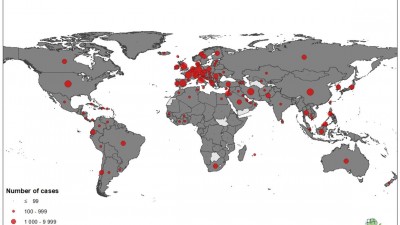It defines the point when a buyer or seller becomes liable for goods transported by sea. It is important to note that FOB does not define the ownership of the cargo, only who has the shipping cost responsibility. Recording the exact delivery time when goods arrive at the shipping point can be challenging. Constraints in the information system or delays in communication often cause a slight timing difference between the legal transfer of ownership and the accounting records. For example, let’s say Company ABC in the United States buys electronic devices from its supplier in China and signs a FOB shipping point agreement. Company ABC assumes full responsibility if the designated carrier damages the package during delivery and can’t ask the supplier to reimburse the company for the losses or damages.
Who Pays for Freight on Board (FOB)
In practice, many deliveries go directly to warehouses, job sites, or inland locations. The name was changed to DPU (Delivered at Place Unloaded) to remove the assumption that unloading must happen at a terminal. FAS requires the seller to place the goods alongside the vessel, and FOB transfers risk once the goods are loaded onto the ship. DPU and DAP require the buyer to handle customs clearance, while DDP places the entire import process—including import duties—on the seller. Effective negotiation of FOB terms requires a clear understanding of each party’s responsibilities and the specifics of the contract. Determining the FOB price involves considering the cost of goods, transportation fees, and handling charges.
The use of terms for defining FOB should be established within the freight invoice, bill of lading or other appropriate documentation. Rail carriers use this six- to nine-digit code to refer to the location of a railway station. This powered tailgate assists with loading and unloading large and heavy goods. DRP is the process of forecasting, planning, and managing the movement of goods, ensuring a smooth and efficient supply chain.
FOB Origin dictates that the buyer assumes responsibility for the goods as soon as they are loaded onto the carrier at the point of origin. This impacts shipping costs, risks, and the logistics process, as the buyer must manage these aspects from the point of origin. For new shippers, understanding FOB can be even more complicated, and as a result, more shippers are choosing to outsource the entire process to third party logistics providers (3PLs). Of course, there are other Incoterms that exist, including their own set of definitions and implication, and all international shipments will likely use these terms in the documentation.
Before negotiating, make sure you understand the consequences of using FOB shipping point or FOB destination for your purchase—in terms of costs, risks, and responsibilities. Some companies will offer different international shipping for different types of products. If a shipment is sent under FOB destination terms, the seller won’t record the sale until the goods reach the buyer’s location.
FOB and CIF are completely different Incoterms® used throughout the supply chain. Since the buyer takes possession of the items at its receiving dock, that is also where the seller should document a transaction. The phrase passing the ship’s rail is no longer in use, having been dropped from the FOB Incoterm in the 2010 revision.
Meaning of Freight On Board in Shipping Terms
FOB is an internationally recognized standard, making it easier to negotiate and enforce shipping agreements in global trade. At uShip, we make LTL freight shipping simple, cost-effective, and transparent—helping businesses navigate FOB terms with confidence. DAP, or “delivered-at-place,” says a seller agrees to be responsible for transporting goods to a location stated in the sales contract. Under CPT, or “carriage paid to,” the seller pays for delivery of goods to a carrier or nominated location and assumes risks until the carrier takes possession. FAS stands for “free alongside ship” and is often used for bulk cargo transactions.
When the shipment has been received on board, the carrier of the goods will issue a ‘Bill of Lading’ document (B/L, or BoL) stating if the shipment is on ‘Freight Collect’ or ‘Freight Pre-Paid’ terms. These terms relate to which party will be paying for the International Freight costs. These documents detail the point at which the responsibility for the goods transfers from the seller to the buyer.
Once the first carrier takes possession, risk transfers to the buyer, who then handles the rest of the shipment. FCA is useful for buyers who want more control over international freight selection but prefer the seller to handle export logistics. Cost insurance and freight (CIF) includes the transport costs of the goods, insurance, and freight charges.
Transportation
- This document contains important information about the shipment and is a legally binding contract between the shipper and carrier.
- Understanding these components helps exporters and importers avoid confusion in global shipping contracts.
- These standardized terms, published by the International Chamber of Commerce, define the rights and responsibilities of buyers and sellers in international transactions, resolving risks and uncertainties.
- It simply refers to who has the obligation and liability for a shipment while in transit.
- The seamless movement of goods across international boundaries is crucial for businesses involved in global commerce.
Domestic shipments within the United States or Canada often use a different meaning, specific to North America, which is inconsistent with the Incoterms standards. Consider your options for managing freight on board destination your goods during transit and purchasing cargo insurance. If your items are expensive, unique, or in a category where obtaining insurance is difficult, negotiating for FOB destination may be a better option.
FOB conditions may affect inventory, shipping, and insurance expenses, regardless of whether the transfer of products happens domestically or internationally. This guide intends to simplify the complexities of FOB, serving as a helpful resource for importers and exporters alike. From its basic meanings to the subtle differences between FOB Origin and FOB Destination, let’s explore the core principles that underpin this international trade term.
It means that a seller pays for all shipping costs and that a transaction is not complete until the goods reach the buyer’s destination undamaged. CIP is similar to CPT, but the seller must also provide insurance coverage up to the delivery location. However, risk still transfers early in the process, meaning buyers should verify insurance details to ensure adequate protection.
Negotiability of FOB Terms
EDT is the date and time when a shipment is scheduled to leave its point of origin. COD is a request to change the destination of a shipment after the delivery request has been made. Properly managed FOB terms can lead to more efficient logistics operations and cost savings. Find a transportation provider that cares about your safety and your reputation. When “FOB” appears on your shipping documents, you need to understand what it means; if you don’t, and something goes wrong, you may be left with unexpected expenses which are the last things you need. Ben is passionate about International Trade, Import/Export, International Shipping and connecting world markets.
These laws use specific terms outlined in detailed contracts to define delivery time, payment terms, and when the risk of loss shifts from the seller to the buyer. Known as Incoterms, these terms are published by the International Chamber of Commerce (ICC) to help navigate the complexities of international trade and differing country laws. The most commonly used international trade terms are EXW (Ex Works), FOB (Free on Board), CIF (Cost, Insurance, and Freight), and DDP (Delivered Duty Paid).
- Until the items have arrived at the buyer’s location, the seller retains legal responsibility for them.
- Incoterms apply to both international trade and domestic trade, as of the 2010 revision.
- While the seller does bear higher costs under FOB destination, they can factor shipping costs into pricing.
- The latest version is Incoterms 2020, published by the International Chamber of Commerce (ICC).
By addressing these factors, both parties can negotiate terms that protect their interests and facilitate a smooth transaction. In this comprehensive guide, we will delve into the meaning of Freight on Board, why it matters, who pays for it, explore related terms, and distinguish between FOB Origin and FOB Destination. Additionally, we’ll shed light on the differences between CIF (Cost, Insurance, and Freight) and FOB. That’s why, in a role like yours, it’s important to continuously self-educate.
Assume the computers were never delivered to Company XYZ’s destination, for whatever reason. The supplier takes full responsibility for the computers and must reimburse Company XYZ or reship the computers. In large ports like Rotterdam or Singapore, the charge might be as low as $100-$150 for a 20ft container. But move the same cargo through a U.S. or Australian port, and the fee can go up to $300–$500 per container. A 40ft high cube double-door container adds cost because it needs more attention. Hazardous cargo, reefers, or oversized items can come with their own pricing.
This change aligns with modern supply chain practices where businesses increasingly handle their own inland logistics rather than relying on external freight providers. Before diving into each Incoterm, let’s go over some key steps in the international shipment process. These steps define when and where responsibility transfers from the seller to the buyer. Because EXW shifts maximum responsibility to the buyer, it’s often used when the buyer has a strong logistics network and wants full control over shipping and import processes. While FOB originated in the shipping industry, its application has expanded across various sectors.
























Comments